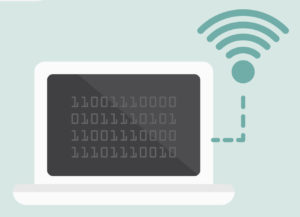A working glossary for the Digital Age
Remember the tower of Babel? Tech talk can be a little like that. So to make sure we’re all on the same page, here’s a glossary of terms as defined by the Governor’s Blue-Ribbon Commission on the Economic Competitiveness of Computing and Data Analytics:
 Technical Terms
Technical Terms
ALGORITHMS:
A step-by-step procedure for performing calculations; generally associated with data processing and automated reasoning.
ANALYTICS:
Everyday tools for exploring data sets, such as queries and text search through discovery of meaningful patterns in data using advanced techniques such as machine learning, data visualization, and statistical analysis.
BIG DATA:
Data sets that are both massive and complex.
CLOUD COMPUTING:
Computing resources that are delivered as a service via a network, typically the Internet.
DATA LIFE CYCLE:
Set of processes in an application that transforms raw data into actionable knowledge. It involves collection of raw data, preparation of information, analytics, visualization, and access.
DATA MINING:
Use of computational methods to find desired information in data sets.
DATA SCIENCE:
The extraction of actionable knowledge directly from data through a process of discovery, or hypothesis formation and hypothesis testing. It is the fourth paradigm of science, following experiment, theory, and computational sciences. It refers to the conduct of data analysis as an empirical science, learning directly from data itself.
MACHINE LEARNING:
The use of automated algorithms to find and evaluate patterns in data, enabling predictions that are increasingly accurate. Often referred to as advanced analytics.
STRUCTURED DATA:
Familiar database technology in which data elements are characterized in a specific format.
UNSTRUCTURED DATA:
Data that consists of a vast number of data points that often have multiple form and may or may not be inter-related.
VISUAL ANALYTICS:
Data analysis using visualization techniques, which enable researchers to look for novel patterns in data
 Skill Requirements
Skill Requirements
CODING:
Code is a set of instructions (or rules) that computers can understand; it might be helpful to think of code as a recipe. People write code, code powers computers, and computers power many everyday objects like phones, watches, microwaves, and cars. Just as people can understand different languages, computers can understand different languages (like Python, C, C++, Perl, Visual Basic, Java, Javascript, Ruby, and PHP, among others) which translate our instructions into binary. There are “low-level” and “high-level” coding languages. Lower-level languages more closely resemble binary code while higher-level languages are easier to code in. So learning to code is literally like learning a new language (learning to construct sentences, etc.).
COMPUTING:
The process of utilizing computer technology to complete a task. Computing may involve computer hardware and/or software, but must involve some form of a computer system.
COMPUTATIONAL SCIENCE:
Computational science is a rapidly growing multidisciplinary field that uses advanced computing capabilities to understand and solve complex problems. Computational science fuses three distinct elements: Algorithms (numerical and non-numerical) and modeling and simulation software developed to solve science (e.g., biological, physical, and social), engineering, and humanities problems; Computer and information science that develops and optimizes the advanced system hardware, software, networking, and data management components needed to solve computationally demanding problems; and the Computing Infrastructure that supports both the science and engineering problem-solving and the developmental computer and information science.
DATA ANALYSIS:
Manipulate and analyze data for use in functional or business units. Identify and develop methodologically sound and re- producible approaches for analyzing data sets that are often large and/or messy.
DECISION-MAKING:
Drawing from various information sources, analyze, visualize, and communicate insights regarding what has happened. Create models and software that predict what is going to happen or prescribe what should happen.
PROBLEM-FRAMING:
Frame industry problems as analytical problems and use statistical analysis to solve them. Create the data sets and analytical tools necessary to solve industry problems and/or innovate.
STATISTICS:
A number of approaches, largely based on advanced mathematics, that are used to collect, analyze, and extract information from data sets.


